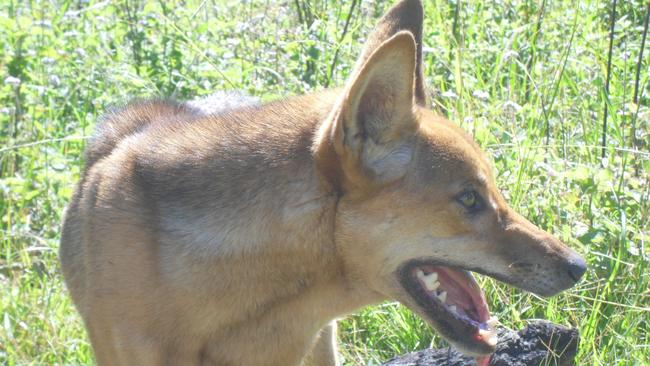Farmers get two trappers to tackle exploding wild dog numbers across SA
AFTER prowling dangerously close to rural towns and killing thousands of sheep across the state, South Australia’s wild dogs may be in trouble from July.

SA News
Don't miss out on the headlines from SA News. Followed categories will be added to My News.
- Wild dogs far closer to southern towns than ever before
- How we warned of the problem back in July 2016
- State Government ‘ignoring calls for more dog trappers’
- Video: Do you have the right shark repellent?
FARMERS struggling to shoot or trap hundreds of wild dogs south of the state’s dog fence are finally getting help with the State Government announcing two full-time trappers will start work in July.
The trappers will target an explosion in dog numbers, with the animals prowling dangerously close to rural towns and killing thousands of sheep across the state.
Another $200,000 was also pledged for an extensive baiting program to protect SA’s $4.7 billion livestock industry.
Livestock SA member Geoff Power welcomed the news after the economic cost of wild dogs on the nation’s agriculture industry ballooned to $89 million, more than double 2009 estimates. The news also follows federal funds for a single trapper in SA running out more than 18 months ago, despite him trapping 108 dogs in 14 months.
Since then, the wild dogs had continued their march south, with one shot just north of Jamestown three weeks ago, another at Laura and others trapped as far south as Eurelia in the Upper North and at Lock on the West Coast.
“They are causing untold damage, on the Far West Coast, I’ve heard reports of some 3000 sheep being lost,” Mr Power said.
Wild dogs, including dingoes and hybrid feral dogs, have forced stations like Arcoona Station 150km north of Port Augusta to employ a full time trapper, with more than 100 trapped in a year.
Livestock SA had been calling for new funding from the former State Government to no avail, as dogs south of the 5614km fence bred with wild dogs further south.
“We’ve been telling government the dogs are moving south for a long time,” Mr Power said.
“This is great news.”
The baiting campaign would give landholders an extra 100,000 manufactured and fresh meat baits in pastoral areas.
This is added to 180,000 supplied through the Biteback program this year.
The campaign begins with aerial baiting targeting wild dog hot spots inside the fence between Coober Pedy and the New South Wales border, according to Primary Industries Minister Tim Whetstone.
“Recognising the urgency to address the impact of wild dogs on South Australia’s livestock, the trappers will commence on July 1 this year and their efforts will go a long way to reducing wild dog numbers, especially those that live and breed inside the wild dog fence,” Mr Whetstone said.
“At the same time as the aerial baiting campaign rains down near the dog fence, our co-ordinated strategy will provide a one-off allocation of free baits to all pastoral landholders.”
Farmers would also have support from government departments with Mr Whetstone saying it was vital to support the state’s farmers as primary industries continued to be “the backbone of our economy”.


